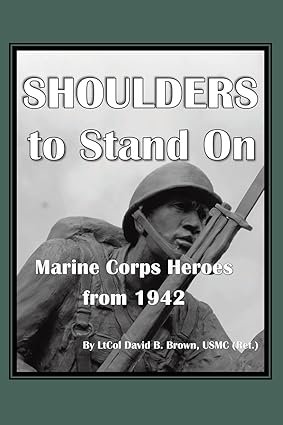MWSA Review
Near the end of his book—and at the end of his service in Iraq—author John J. McBrearty explains that “through my series of essays written in the combat zone of Operation Iraqi Freedom, I want to shed light on military operations in Iraq that are far less known to the general public. These operations include a multitude of civil-military efforts designed to make a difference for that country.” His observations, written during his tour and sent back to the States on a regular basis, accomplish this goal.
Some readers might equate “combat” only with explosions and destruction, but this book demonstrates how support units and relations with civilian populations are essential to battlefield success in contemporary warfare. McBrearty argues that working with local authorities and community organizations to determine needs, assess capabilities, and coordinate joint projects allows more freedom and greater opportunity to a population that had been oppressed in Saddam Hussein’s reign.
In his chapters we learn that McBrearty’s unit was “activated for 545 days of federal service...the first wartime mobilization of a combat arms maneuver battalion from the National Guard since the Korean War.” Being away from home and in a war zone was not anticipated by soldiers who expected to serve in this country. They and their families had to adjust and adapt.
McBrearty’s Armor Battalion “executed more than 2,500 combat patrols that included day and night mounted and dismounted patrols, raids, and cordon and search missions.” Losses are mentioned but we don’t get much explanation of how they occurred or details of the soldiers’ lives. An exception is when McBrearty hears one casualty report: “This time my heart sank...as I vividly remembered this young man. Specialist Quoc Binh Tran, 26, from Mission Viejo, California, was killed at approximately 11:00, Sunday, November 7, 2004, from injuries sustained from a vehicle-borne IED that detonated near his convoy in Baghdad, Iraq. SPC Quoc Binh Tran was a member of Detachment 3, Company.”
The book’s primary focus is how “three different countries [Poland, America, Iraq] with vastly different cultures...bonded together to work for peaceful solutions for Iraq's future.” Improvements to schools, roads, and drainage are explained as a process involving assessment of a problem with input from local authorities, design and budgeting of solutions through funding agencies, and implementation using Iraqi firms. Challenges had to be overcome as, for instance, getting supplies in a war zone was not always simple. Members of the unit used off-duty time to improve their own conditions, too, for example, creating an Internet Café, which helped morale by making it easier for them to stay in touch with family and friends at home.
Not only did the Iraqi region gain from these efforts, explains this book, but the American soldiers themselves came to appreciate events back home like Thanksgiving, “a quintessential holiday that Americans enjoy year after year.” Especially when they are welcomed back after their overseas service, they understand “that each and every moment of our time as well as each and every relationship is exceedingly valuable.” McBrearty himself describes the thrill of finding his children matured: his son had been “barely walking” when he deployed; “now he has grown into a fully functional boy of four years old. No diapers and talking a mile-a-minute!”
Whether that son will follow his father’s example—taking on the role of citizen soldier and putting what he learns into words—may be hard to predict. But that some of McBrearty’s readers will do so is an admirable goal of this collection.
Review by Michael Lund (June 2024)
Author's Synopsis
General Gustave Perna U. S. Army, Retired, Commander of Operation Warp Speed:
"Lt. Col. John McBrearty, a natural leader, combat Veteran, and family man, shares his unique perspective on history. In Volume II, Lt. Colonel John J. McBrearty chronicles his unit's triumphs and failures in the combat zone of Iraq through a selection of essays and letters written home. With his insight, candor, and love for history, Colonel Mack provides the reader with a rare inside view of this microcosm of American military history."
"I want to shed light on military operations in Iraq that are far less known to the general public. These operations include a multitude of civil-military efforts designed to make a difference for that country. While facing hostile enemy engagements, we built schools, hospitals, roadways, water canals, bridges, and even a golf course. These infrastructure improvements elevated the Iraqi citizens' quality of life. This book is a testament to how citizen-soldiers made a difference."
John J. McBrearty
Format(s) for review: Paper and Kindle
Review Genre: Nonfiction—History
Number of Pages: 117
Word Count: 18,311




















